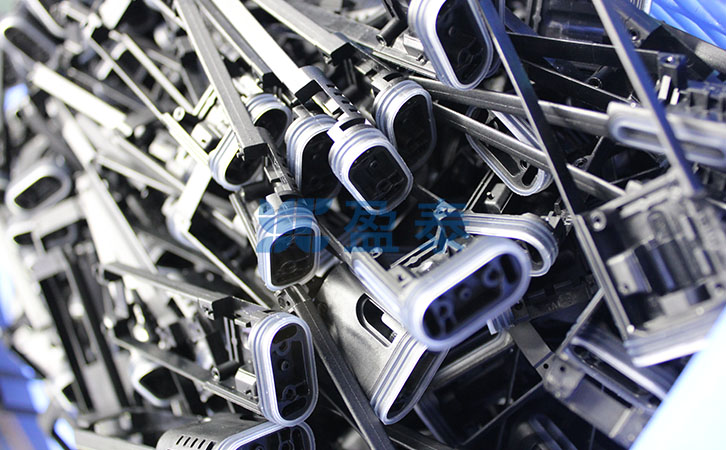The production process of liquid silicone (LSR) encapsulated plastic is a common dual material molding process, mainly used to manufacture composite components that combine silicone elasticity, weather resistance, and plastic structural strength (such as seals, medical treatment equipment, electronic product accessories, etc.). The following are the detailed steps and key technical points of the process:
1. Material preparation
Liquid Silicone (LSR):
The two-component (A/B) platinum sulfide system requires low-temperature storage (to avoid premature curing), and should be mixed in proportion and vacuum defoamed before use.
Plastic substrate:
Common engineering plastics such as PC, ABS, PA, etc. need to be pre injection molded into base components or synchronously molded through two-color injection molding.
2. Production process flow
Secondary molding (enveloping molding)
Plastic substrate molding
First, use a fully automatic injection molding machine to produce plastic parts, cool them down, and then remove them.
Pre treat the plastic surface (such as plasma treatment, chemical primer) to enhance its adhesion with silicone.
Liquid silicone coating
Place the plastic parts into the LSR mold and inject liquid silicone gel after the mold is closed.
Silicone is heated inside the mold (usually 120-200 ℃) and solidifies, forming a chemical/mechanical bond with the plastic.
3. Application examples
Electronic products: Waterproof buttons (plastic frame+LSR sealing layer).
Automotive components: Sensor sealing ring (PA66 shell+LSR encapsulation).
Medical treatment equipment: Soft tactile handle (ABS body+LSR grip).
By precise control of materials, molds, and process parameters, liquid silicone coated plastic can achieve mass production of high-performance composite components.


